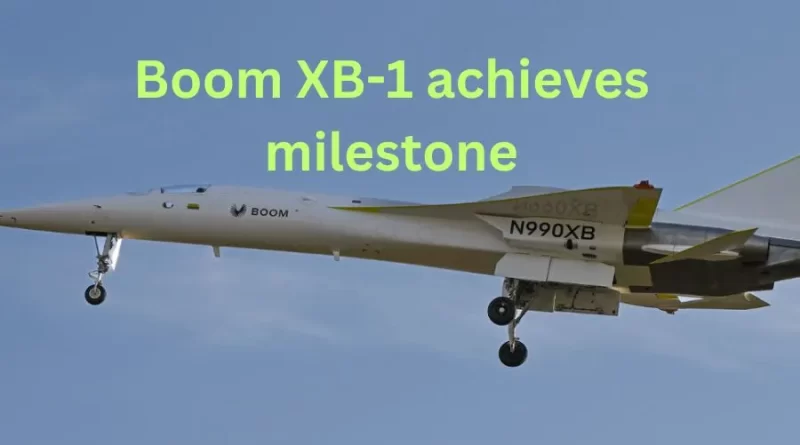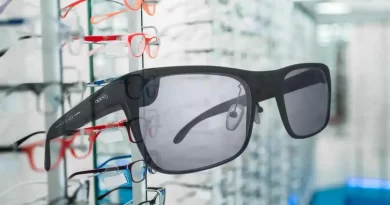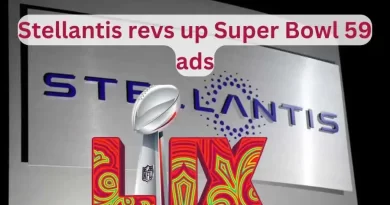US Boom XB-1 Achieves Historic Supersonic Milestone
US supersonic jet flight finishes last milestone in overcoming sound barrier
World’s fastest airliner introduced by a US company, Boom has successfully broken the sound barrier by completing the required test in Mojave Desert, California. This was the first test flight by the company’s XB-1 demonstrator aircraft and the milestone was achieved on January 28th, 2025. What is remarkable about the test flight is that it is seen as a return of supersonic travel since 1947.
In what is seen as an answer to the Concorde produced jointly by the British and French aviation industry, the newest US airliner is sure to be the precursor of the Generation-Next commercial airliner. Boom’s latest commercial passenger airliner by the name of Overture, has been preceded by the XB-1 demonstrator aircraft’s 12 successful flights so far.
With the orders for the flight’s commercial production from many Airlines, including American Airlines and Japan Airlines already on the anvil, decades of waiting came to an end. That totals about 130 orders and pre-orders from many aviation companies throughout the world.
Live documentation was done while 25 engineers worked in the control room to carve out a success story of the first civil supersonic jet built in America. The engineers reviewed the data during the independently developed supersonic jet’s mission in Mojave.
Mojave Air and Space Port was utilized by Boom’s chief test pilot Tristan ‘Geppetto’ Brandenburg, to fly the aircraft. The plane accelerated to Mach 1.122 (652 knots or 750 miles per hour) which is about 10% faster than the sound. In 12 minutes at about 35,000 ft height, the said barrier established by Chuck Yeager in 1947 was broken for the first time.
Prior to the January 28 flight, the fastest XB-1 speed had hovered around Mach 0.95, which was just notches below the supersonic threshold of Mach 1. Mach 1 speed had been achieved by the latest test flight on January 10. The same historic airspace as of the legendary pilot Yeager was utilized by the XB-1.
America’s foray into breaking the sound barrier milestones, in the supersonic space, has been achieved by adding up newer speeds hitherto unheard of. With Boom’s ambitions soaring, there are plans to increase the number of passengers from 64 to 80 at Mach 1.7.
Boom CEO, Blake Scholl hopes of a complete takeover of the conventional airliners by the supersonic ones during his own lifetime. In March 2024, Scholl said, “I very much believe in the return of supersonic air travel, and ultimately to bring it to every passenger on every route. And that’s not something that takes place overnight.”
No one to really challenge the records of speeds by XB-1
With innumerable museums across the UK, US and France now showcasing the obsolete Concorde prototypes, there is an absence of any challenger who breaks the records of the speeds achieved by XB-1. The first 002 Concorde prototype flew on March 25, 1970, and 21 years later the commercial supersonic travel ended in November 2003.
XB-1 comes with twice the speed of nowadays conventional airliners. Added Scholl, “A faster airplane is much more human-efficient, and it’s much more capital-efficient. You can do more flights, with the same airplane and crew.”
The efficiency of the new technologies has been showcased by the XB-1 test craft manufactured by Boom Supersonic. Scholl further said, “We can significantly reduce all of the cost and impact that goes into airplanes by making them faster. if we have faster airplanes, we don’t need as many.”
‘Four hours for $100’ has been the catchword for Boom CEO Scholl, something which is becoming true today. In May 2021 while talking to a leading news channel, he said people will be able to fly anywhere in the world and 2024 has proved that it was still his pivot.
More than 600 routes worldwide have been earmarked for the Overture flights to be operated in a single day, by the company. Manufactured entirely from carbon fiber composites, for XB-1, the materials spell strength and are lightweight. Conventional jet engines have been fitted in Overture as of now, with an introduction of 100% sustainable aviation fuel (SAF) in the future.
Scholl told the same News channel that being aware of the current problems, the SAF is being adopted in a slower mode. Designs have been improved in a way that interruption in the pilot’s view of runway is done away with. This means both XB-1 and Overture have been fitted with a long nose and a high angle of attack for takeoff and landing.
Earlier Concorde had dealt with the same problem, by fitting a moveable droop nose. Boom, however, comes with an augmented reality vision system enabling excellent runway visibility. That too, without an extra weight and complexity, thus benefitting the pilots.
Scholl hailed Boom aircraft as the future of the aviation industry. He said, “The advent of digital engineering is a huge enabler for why supersonic flight’s coming back.” In 2024, Scholl while talking to the same news channel again said, “Aerodynamics, materials, propulsion: Those are the big three areas where we’ve made huge progress versus Concorde.”
While Concorde’s development took place in wind tunnels, Boom has improvised by utilizing again the computational fluid dynamics technique. Concorde’s methodology included building up costly physical models, running tests, and then repeating again in the 1960’s.
Explaining further, Scholl said, “You just can’t test very many designs, when every iteration costs millions and takes months.” Computational fluid dynamics “is basically a digital wind tunnel. We can run the equivalent of hundreds of wind tunnel tests overnight in simulation for a fraction of the cost of a real wind tunnel test.”
The Boom Overture Superfactory in Greensboro, North Carolina has been designed to manufacture 66 Overture aircraft per year. Scholl added, “There’s not enough of it, and it costs too much, but it is scaling.” Talking about the above tests, he was hopeful that one day these will be used for all long-haul air travel.








